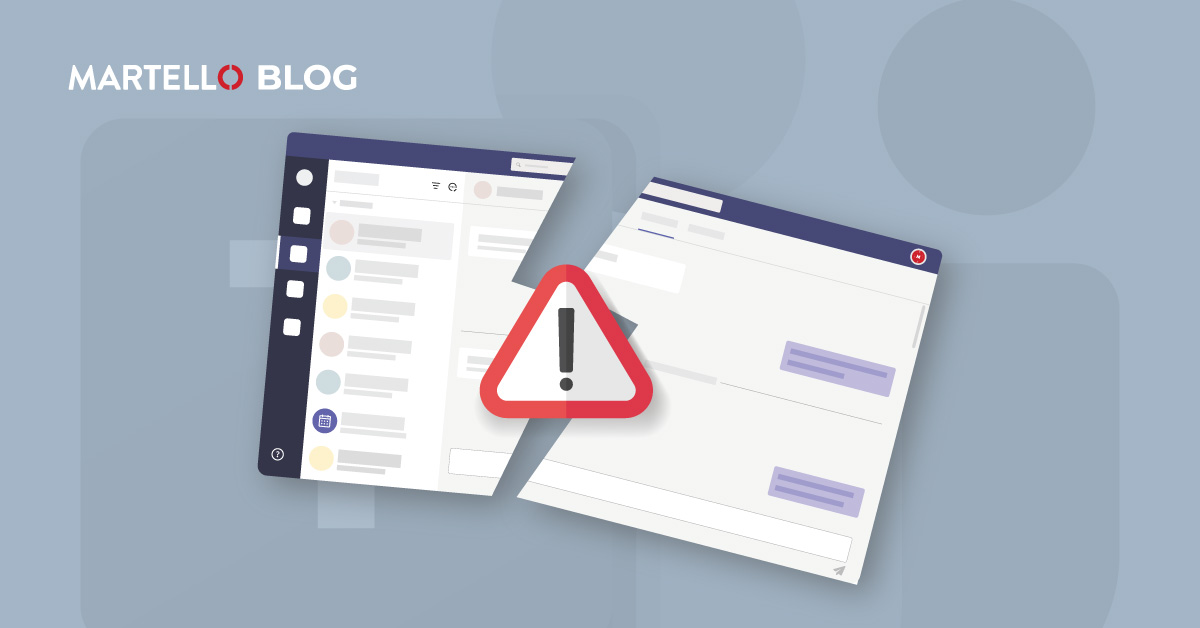Everything You Need To Know: Microsoft Teams Outage
Outages
It’s a red alert for any IT team. Hearing the words “Microsoft Teams is down” can scare even the most experienced tech department. But, with a few clear definitions – and a way to spot outages and solve them – you’ll be well on your way to having a Microsoft Teams outage totally under control.
Your organization now relies on Teams for nearly every aspect of business communication and collaboration. That means Teams needs to be up and running every second of every day. To do that you need to know how to define outages, detect them, and respond to them and so this little guide will get you started with all that.
Even better, listen to our on-demand webinar on the topic here.
Definitions of a Microsoft Teams Outage
Understanding the extent of your Teams outage begins with categorizing it. These don’t always have to be hard and fast rules because there are a huge number of variables at play. However, being able to define exactly what type of Teams outage your users are experiencing will go a long way in helping you, and your team, further understand and ultimately rectify the problem.
What is a Microsoft Teams outage?
So, the first question seems a little obvious, but it’s actually very important. How you define an outage sets the tone for every other question. Is an outage a single user in your business, or would you define it as any time more than one user experiences an issue? Is an outage only recognized as a problem when it affects users in more than one team? These are just examples, and the size and scope of your Teams setup should be the foundation of your answer to this question.
Which area is affected?
Going one step further in understanding an outage, you need to define the area affected in your business. It might just be a single team in a local office, or maybe your entire EU operation is having problems. The worst-case scenario is that it’s a global issue. Whatever it is, defining the locality of the outage will help you to investigate the root cause much faster.
Who is responsible for the Microsoft Teams outage?
Finally, you need to understand who is responsible for the outage. Clearly, it’s your responsibility to get it fixed, but we mean who is responsible for the cause of the outage? That could be Microsoft, your ISP, your proxy provider, or even an internal member of your team. The faster you figure this out, the faster you’ll have the situation under control.
With these three key questions answered, you can categorize the type of outage and start to put a fix in place. Better still, set up a qualification matrix to quickly categorize an outage – because when Teams is down, you’re against the clock.
Microsoft Teams Outage Detection
You can spot Teams outages in a variety of ways, all with different levels of applicability, depending on the scope of your Teams install – that’s a key theme when it comes to finding and solving Teams outages.
Tools such as Microsoft Service health status can help you understand if it’s a Microsoft problem – though it probably won’t be, and it only really gives an understanding of problems through a very zoomed-out lens.
There are also your own user reports via your ticketing system, but these can be tough to verify, and also hard to track trends which help define the scale of a problem.
Or you could turn to an internal networking monitoring tool, but again that won’t tell you about Teams itself, particularly audio and video quality. Perhaps slightly left field, you could check Twitter for reports of Teams issues, but again this is very hard to verify and very time-consuming to carry out.
Ultimately, the quality of response you’re able to put in place is going to be based on the quality of your detection and understanding of the root cause of the issue. So you really need a tool that’s built for the job – like Vantage DX.
Microsoft Teams Outage Response
What you do about any type of outage is going to be defined by the definition matrix we already covered. The number of resources you deploy and your SLAs for rectifying issues should be defined for every type of outage you can define. If you have a VIP without Teams access, it’s safe to say you’re going to need to fix it very quickly. But, if it’s outside of business hours and a single contractor is reporting issues, perhaps it won’t be so urgent. Again, as with all of this, that depends on your business’ Teams setup.
When it comes to solving problems, let’s use the example of it being a Teams outage due to an ISP issue. You need to have a process for who contacts the ISP, who the primary contact there is in this situation, and how soon you can expect a response and even better a fix. While you’re waiting for that fix, you need to have a set way to alert and assist users because you don’t want discontent spreading beyond the Teams outage itself and impacting other areas of the business.
All Together Now
To keep Teams outages from having a dramatic impact on your business, you need to refine your entire response to them. That means defining types of outages, how you discover them, and how you go about fixing them. Having that framework in place will speed up fixes, keep users happy, and allow your team to do the best job possible.
To find out more about what “Teams Is Down” really means, watch our on-demand webinar: Building a Microsoft Teams Outage Response Plan
Are you ready for the next outage?
When outages happen you need to quickly qualify the issue to determine the best course of action.
Check out our latest video to get the best practices to minimize disruption and keep productivity flowing.



